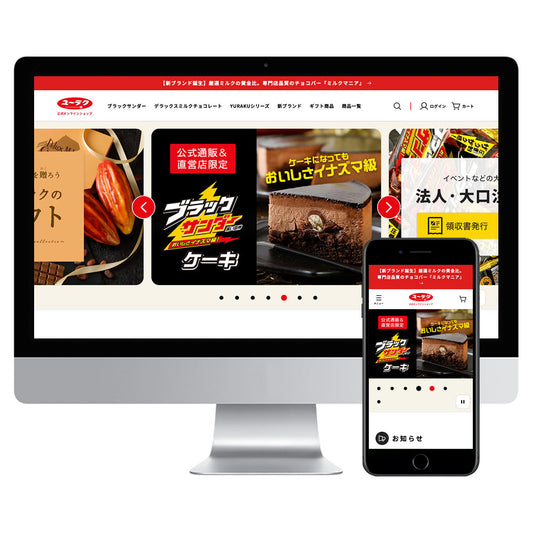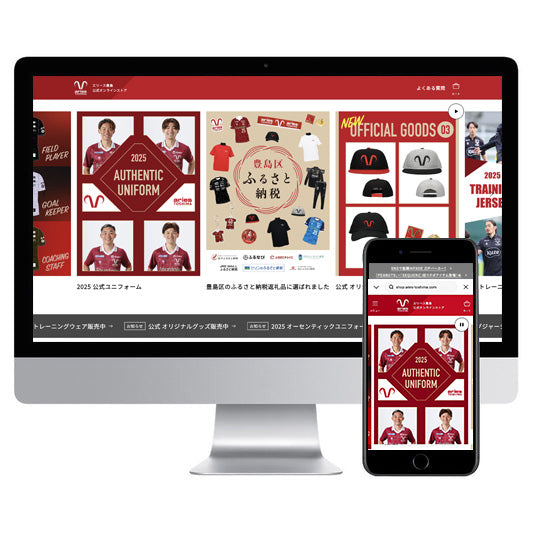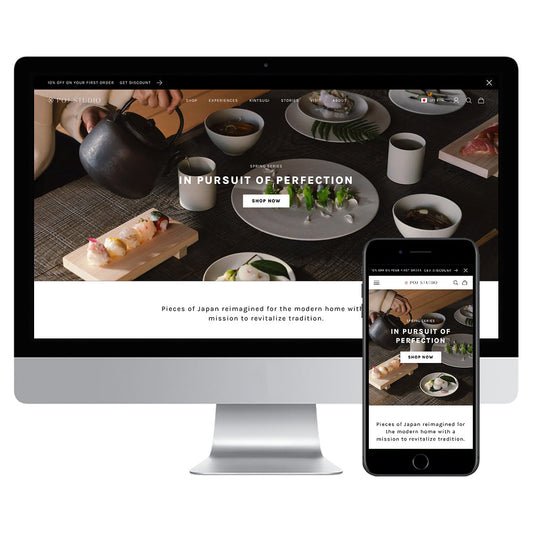There is only a short time left until Universal Analytics (UA) is phased out.
There may be some businesses that have not yet implemented Google Analytics 4 (hereinafter referred to as GA4) on Shopify.
In this article, we will explain how to set up GA4 using Shopify's Google Channel app, which was recently officially supported, as well as how to set it up using Google Tag Manager (GTM) and the Shopify Pixel.
In this article, we will assume that the GA4 property and GTM container have already been created. This article is based on information available at the time of publication (April 2023). Please note that Shopify, Google Analytics, and Google Tag Manager may be updated.
Some content requires knowledge of Javascript and Liquid. Please configure it at your own risk.
【table of contents】
Using the Google Channel app
GA4 is now officially compatible with Shopify from March 2023.
Although it is officially supported, instead of entering the Tag ID in the designated place on the management screen as in the past, you will use the Google Channel app.
【procedure】
- Install the Google Channel app (free)
- Open the app and connect your Google account
- Select a GA4 property in your linked account or create a new one

Google channel app settings
That's all it takes to connect Shopify and GA4.
In addition to the standard events of GA4, the following e-commerce related events can be acquired. This is the bare minimum you need.
GA4 e-commerce events available in the Google Channel app
- view_item (view of product page)
- add_to_cart (add to cart)
- begin_checkout
- add_payment_info (add payment information)
- Purchase (payment completed)
If you just want to get basic e-commerce data, the easiest and most convenient way is to use the Google Channel app.
Please note that at the time of publication, e-commerce events other than the events mentioned above (such as view_item_list or view_cart) are not supported, so if you want to measure them, you will need to use the GTM method explained below or the Shopify pixel.
Use Google Tag Manager
By using Google Tag Manager , you will be able to obtain events that could not be obtained using the Google Channel app.
Officially, Google Tag Manager is only supported with the Plus plan, but it can also be used with the regular plan.
It is also possible to use GTM for all measurements without using the Google Channel app. We also provide support for setting up GA4 with a focus on this measurement method.
Shopify settings
For Shopify Plus
【procedure】
- Insert two GTM container snippets into theme.liquid.
- Directly under the head tag
- As high up as possible in the body tag
- Insert the two container snippets into checkout.liquid just like theme.liquid.

Install Tag Manager (Admin > Install Google Tag Manager)
Note
checkout.liquid will be deprecated for the Info, Shipping, and Checkout pages on August 13, 2024. Shopify Plus merchants can customize these pages using checkout extensibility.
For non-Shopify Plus users
【procedure】
- Similar to Shopify Plus, insert two GTM container snippets into theme.liquid.
- Go to Settings > Checkout and Account and insert the two container snippets into the Additional scripts field in the Order Status Page section.
Google Tag Manager settings
Open the target container in Google Tag Manager and click Tags > New to generate a tag.

Creating a new tag
Set the tag with the following contents:
Tag name : Optional
Tag type : Google Analytics: GA4 settings
Trigger : All Pages
Measurement ID : G-XXXXXXXXXX
*The measurement ID can be found in GA4 > Settings > Data Stream > Measurement ID.
Let's check the operation from the GTM preview. If the page_view event is generated when the page is loaded, it is successful.
At this point, you will be able to measure standard GA4 events, but e-commerce related events will require separate configuration. Once you publish GTM, data will be sent to GA4.
Configuring e-commerce related events
Here are three of the most important e-commerce events to track:
Shopify settings
view_item
Store the product data viewed on the product page in the dataLayer along with the GTM trigger event
add_to_cart
Store the product data added to the cart on the product page in the dataLayer along with the GTM trigger event .
purchase
Store the purchased product information and payment information on the purchase completion (thank you) page in the dataLayer along with the GTM trigger event .
*Insert this process into the additional scripts field for checkout mentioned above.
Reference: Getting view_item product information and storing it in dataLayer
<script>
var items = [];
var item = {
'item_name': " {{product.title}} ",
'item_id': " {{ variant.sku }} ",
'item_brand':' {{product.vendor}} ',
'item_category': " {{product.collections[0].title}} ",
'item_variant': " {{variant.title}} ",
'item_name': " {{product.title}} ",
'quantity':1
}
items.push(item);
window.dataLayer = window.dataLayer || [];
window.dataLayer.push({
'event': 'view_item',
'ecommerce': {
'items': items
}
});
</script>
E-commerce related events have required parameters set for each event.
Check out our Google Analytics guide for more information.
GTM settings
view_item
Output the dataLayer value together with the event information (view_item) to GA4
add_to_cart
Output the dataLayer value together with the event information (add_to_cart) to GA4
purchase
Output the dataLayer value together with the event information (purchase) to GA4
Reference: view_item GTM tag settings

GTM view_item tagging
With the August 2022 update, it is now possible to omit parameter settings on the GTM side. The image above shows the items settings, but you can omit describing the parameters by checking Send e-commerce data in the advanced settings.

Processing diagram for each platform when using GTM
For both events, Shopify will process the GTM trigger event and event-related parameters into the dataLayer . GTM will then output the dataLayer parameters along with the e-commerce event to GA4.
Use Shopify Pixel
The Shopify Pixel is a tracking pixel provided by Shopify that was released in October 2022. By using the Shopify Pixel, you can link with various tracking tools including GA4 to collect user behavior data.
Shopify admin > Settings > Customer Events > Add Custom Pixel if new
Setting up your Shopify pixel
Initialization (Adding pixels)
Insert the GA4 global site tag. The pixel must be written in JavaScript, so convert it to the following format. (Change the measurement code G-XXXXXXXXXX to that of the site you want to measure.)
const script = document.createElement('script');
script.setAttribute('src', 'https://www.googletagmanager.com/gtag/js?id=G-XXXXXXXXXX');
script.setAttribute('async', '');
document.head.appendChild(script);
window.dataLayer = window.dataLayer || [];
function gtag(){dataLayer.push(arguments);}
gtag('js', new Date());
gtag('config', 'G-XXXXXXXXXX' );
Subscribe to customer events using the analytics.subscribe() API
analytics.subscribe('page_viewed', event => {
// イベントに応じた測定用のコードを追加
});
Events prepared by Shopify will be fired without any special trigger settings (event content must be written).
Inside each analytics.subscribe(), you will write code to retrieve the e-commerce event tags and parameters.
Currently scheduled events
| Shopify pixel events | GA4 Events |
|---|---|
| checkout_completed | purchase |
| checkout_started | begin_checkout |
| collection_viewed | view_item_list |
| page_viewed | page_view |
| payment_info_submitted | add_payment_info |
| product_added_to_cart | add_to_cart |
| product_viewed | view_item |
| search_submitted | search |
Reference: view_item event pixel code
analytics.subscribe("product_viewed", async (event) => {
gtag("event", "view_item", {
currency: event.data.productVariant.price.currencyCode,
value: event.data.productVariant.price.amount,
items: [
{
item_id: event.data.productVariant.sku,
item_name: event.data.productVariant.product.title,
currency: event.data.productVariant.price.currencyCode,
price: event.data.productVariant.price.amount,
quantity: 1
}
],
});
});
Only the minimum required parameters are described. For other parameters, please refer to Shopify's official help (Customer Event Reference) .
Use an external app
You can also configure GA4 using various configuration apps available in the Shopify app store.
In many cases, measurement is possible by linking with GTM. Initial settings at the time of implementation are usually done automatically or by the app vendor, so merchants do not have to do anything. In most cases, a monthly fee is charged, so be sure to consider the cost-effectiveness before using it.
summary
How to Set Up GA4 for Shopify
| How to set it up | Features |
|---|---|
| Use the Shopify Google Channel app | Easy to set up Limited to measurable e-commerce events |
| Use Google Tag Manager | High setting difficulty Event settings can be freely made |
| Use the Shopify Pixel | Somewhat difficult to set up Limited e-commerce events that can be measured |
| Use an external app | Setup is done for you Separate monthly fees apply |
This time, we introduced four ways to set up GA4 on Shopify. Since the difficulty and flexibility vary depending on the method, check in advance what information you need for site analysis and set it up in the most optimal way.
We also undertake the setup of GA4 on Shopify and analysis services. Please contact us via the inquiry form for any inquiries.





